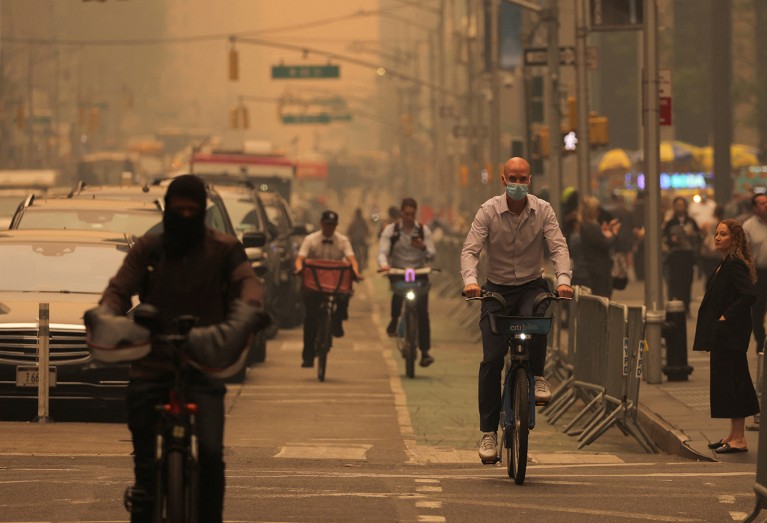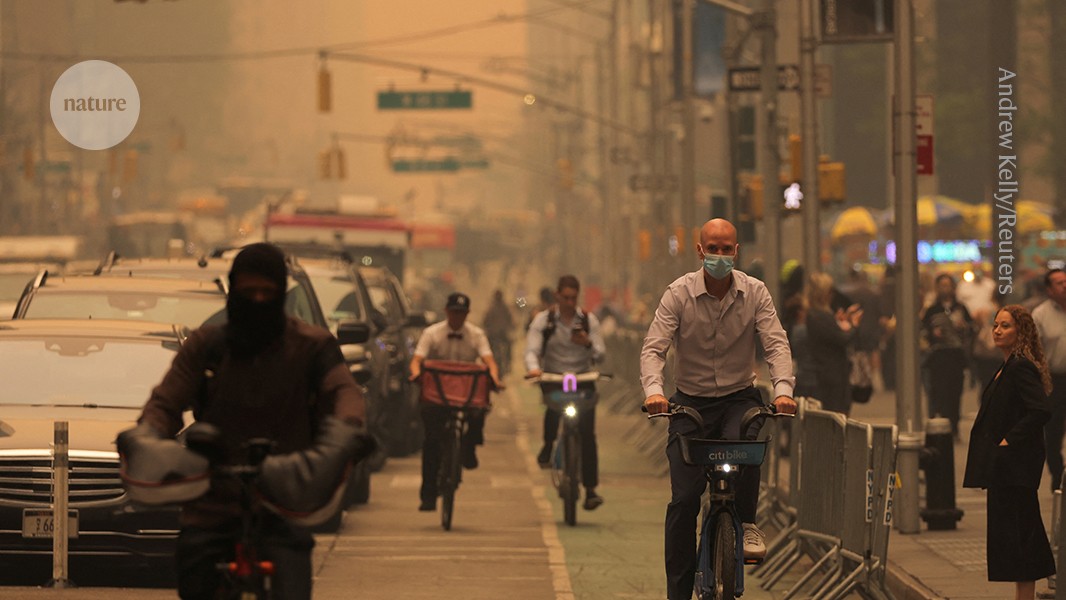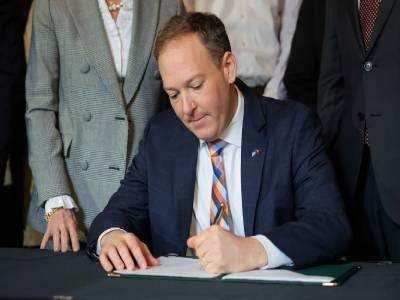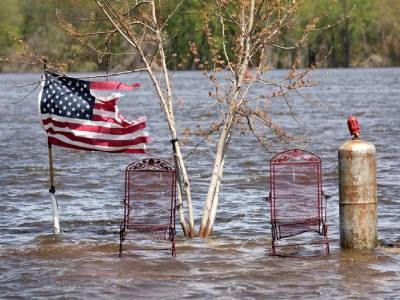
The dangers of wildfire smoke and other pollutants have been investigated at the Human Studies Facility.Credit: Andrew Kelly/Reuters
A US laboratory that has been instrumental in documenting the impact of air pollution on human health is being shut down by the administration of US President Donald Trump. Scientists are rallying to save it.
US environmental agency halts funding for its main science division
Located on the campus of the University of North Carolina at Chapel Hill (UNC), the Human Studies Facility is home to nine sealable chambers where government and academic scientists can safely test the physiological effects of wildfire smoke, vehicle exhaust fumes and other pollutants on willing human participants, often university students seeking cash.
The US government’s General Services Administration, which manages federal properties, cancelled its long-standing lease with the university in February, and the Environmental Protection Agency (EPA), which runs the lab, is now moving out of the state-of-the-art facility. The decision has sparked alarm in the research community that relies on the lab for its work, which scientists say cannot be replicated anywhere else in the United States.
“We need this capability,” says Dan Costa, a former EPA toxicologist whose division used the chambers to collect data that supported air-pollution regulations crafted by the agency. “Virtually all of the air-quality standards that we have today are built around evidence from this exposure facility.”
The EPA did not respond to Nature’s queries about the future of the facility, or scientists’ concerns over its abrupt shutdown.
On the chopping block
The decision to not renew the lease comes as the Trump team works to downsize the US government. The Department of Government Efficiency, launched by billionaire Elon Musk, says that the administration has terminated 563 leases worth US$262 million for facilities used by federal agencies including the EPA.
The annual budget for running the Human Studies Facility, which opened in 1995, has been in the range of US$3 million to $4 million in recent years, Costa says.
A White House budget proposal released earlier this month would cut the EPA’s budget by more than half in the 2026 fiscal year, which begins in October. But sources inside the agency indicate that the administration has already moved to halt funding and wind down laboratory operations in the EPA’s main science arm, the Office of Research and Development, which includes the exposure lab.
A pivotal lab
The Human Studies Facility and predecessor laboratories have played a pivotal part in the regulation of US air pollution. Here, researchers have tested hypotheses about the physiological effects on humans of breathing in particulate matter, chemicals and more in a controlled environment, multiple researchers told Nature. Experiments with human volunteers — at rest or on exercise bicycles, with or without face masks — yield direct evidence that cannot be provided by epidemiological studies and animal experiments.
Trump gutted two landmark environmental reports — can researchers save them?
“It’s a three-legged stool, and these different lines of evidence are mutually reinforcing,” says one EPA epidemiologist, who relies on the clinical exposure data to help verify work analysing vast public-health data sets. Without experimental data that can help to provide a mechanistic understanding of how pollution affects the human body, it’s going to be more difficult for the agency to craft safety regulations, says the scientist, who — like others in this story — was granted anonymity because they are not authorized to speak to the press.
Over the years, experiments at the facility have shown that breathing in fine particles from fossil-fuel combustion harms the heart as much as, if not more than, the lungs. And some of the most important toxicology data on smoke inhalation have come from the human-exposure chambers, says Mary Rice, a pulmonologist at the Harvard T.H. Chan School of Public Health in Boston, Massachusetts.




